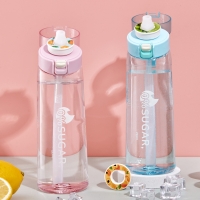What are the standards for plastic cup materials
Plastic cup materials vary greatly
Generally, plastic cups (bottles) have a triangular recycling label with an arrow at the bottom. We can determine the specific material of the cup by the number on this label.
1- PET (Polyethylene terephthalate)
Commonly found in mineral water bottles and beverage bottles, this material is heat-resistant up to 70 ℃ and can be used to hold warm water for a short period of time. It cannot hold acidic or alkaline beverages or high-temperature liquids, and should not be exposed to direct sunlight, otherwise it will produce toxic substances that are harmful to the human body.
5 "- PP (polypropylene)
The PP plastic water cup is made of polypropylene, which has good thermal stability and insulation, is safe, and harmless to the human body. The product can be disinfected and sterilized at temperatures above 100 ℃, and will not deform at 150 ℃ without external force. It can be filled with boiling water without pressure.
58 "- PC (polycarbonate)
Commonly seen in water bottles, space cups, and baby bottles, department stores often use water bottles made of this material as gifts. However, cups made of this material are generally not resistant to high temperatures. If heated or exposed to acidic or alkaline environments, they can easily release the toxic substance bisphenol A (BPA). Therefore, do not use it to hold hot water, and it is also prohibited to use warm water for cleaning.
6 "- PS (Polystyrene)
Plastic cups made of PS material are particularly brittle, have low temperature resistance, and cannot be used in high temperature, strong acid, or strong alkali environments.
7- AS (Acrylonitrile Styrene Resin), PC Material, and Other Categories




